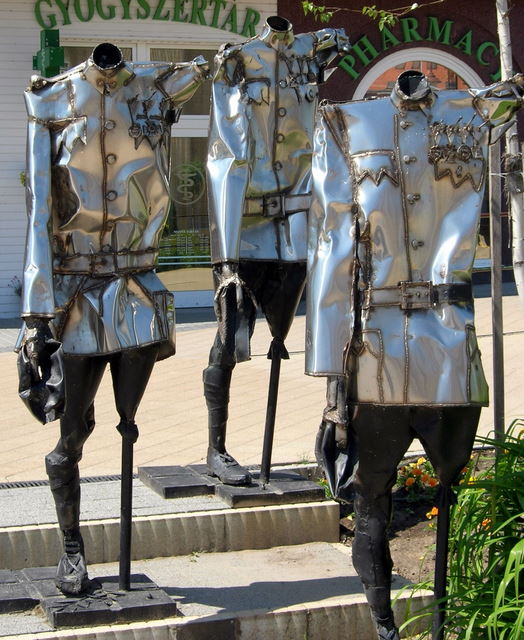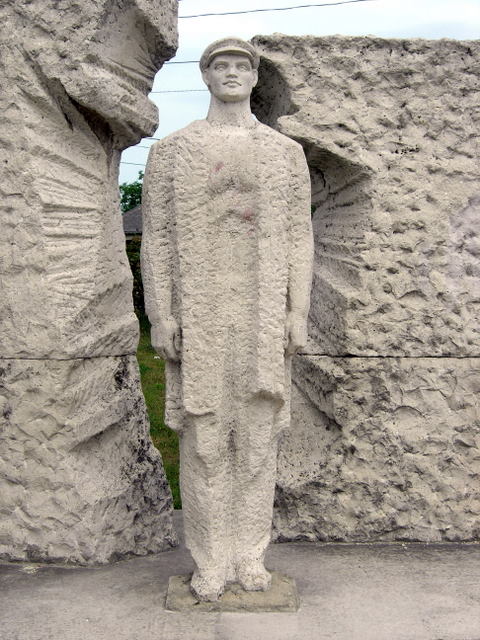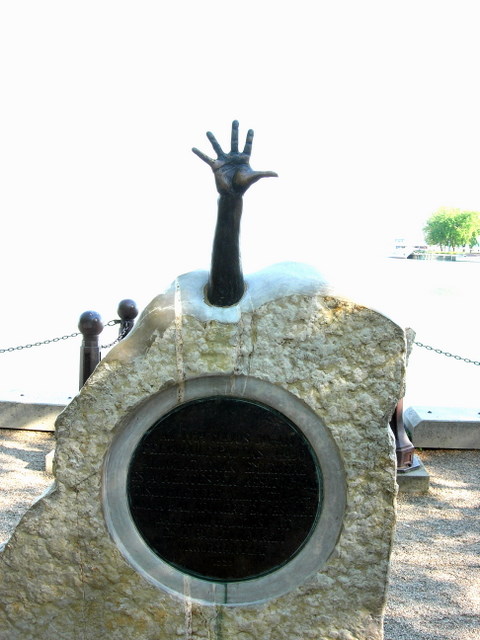A Monumental Week in Hungary
With some time to spare, Mike and Jo head off to find out about Hungarian public art,12 to 18 May 08
With a week still to fill in while we waited for our Australian passports to go to Canberra and return to Budapest, we decided to look at some specific aspects of Hungarian life.
We have seen a lot of public art during our travels ranging from round-about sculpture to massive, and generally dry, water parks. Some of it has been wonderful, some of it quirky or humorous and much of it banal.
During a few days of glorious late spring weather, we lazed about in the city of Siöfok and explored one small communitys public art investment. This little coastal village on Lake Balaton is best known as a holiday resort, but it does have some artistic pretensions. This was the birthplace of Imre Kálmán a composer, known in Hungary as Mr Operetta, Béla Bartόk, another composer, Imre Vaga a renowned sculptor, and a number of lesser artistic lights.
Sprinkled liberally throughout the town are interesting pieces recording important individuals and events. The best of them are life-size and insightful sculptures. This image of Béla Bartόk shows a small, neat and precise man, a little austere with sad eyes surveying the world along an imperious nose. We later found out that Bartόk had died in poor circumstances in New York.

We found Imre Kálmán in a gazebo sitting in a favourite chair with score on the table beside him. A proper man, brought up in the pre-war elegance of the Austro-Hungarian Monarchy, his eyes give the sense of wistfulness for bygone grandeur while the mouth shows a gentleness hooded by an ample moustache.

Jo loved these disembodied uniforms with medals and built up shoulders but no real people inside and standing on a single crippled leg. Spooky!

Not all of the public art is interesting or inspiring. This shocker was contrived and out of proportion in its setting. It probably looked good as a model, but did not translate to full size very well.

A few days after visiting Siöfok, we rode out the Memento Park on the southern outskirts of Budapest. Unlike the Bulgarians who still have some of their Soviet-era art standing, and the Romanians who seem to have pulled it all down, the Hungarians have gathered the best (or worst) into a single place and have made a tourist attraction out of it. We spent a few hours there looking at the sculptures and the associated museum.

Compared with the life-size and sympathetic pieces of Siöfok, the Soviet Heroic monsters of Memento Park are intimidating and impersonal. This running revolutionary dwarfs Jo and looks plainly ridiculous to our eyes.

Like many of these pieces, its subject is the ideology. The human figure is a caricature, with an idealised physique and devoid of any emotions except a blind rage. The face was just scary.

Other fixtures were of the same nature.



The trusty Trabant. A more likely emblem of the times.
There is probably some important philosophical point that should be made here about the art of these two eras, about artists serving the state and the way our own cultural filter affects our impressions. But it would be far too trite to include that critique in a motorcycle blog!
Besides, I lived in Canberra for 10 years during which time the number of monuments along Anzac Avenue increased dramatically; a veritable orgy of erections. A few, like the Vietnam Memorial, have a humanity with which us non-artistic types can connect. Others, like the oversized caricature of a soldier further up the street is so devoid of emotion or sympathy that it should be moved immediately to Memento Park. Or perhaps we should just change the name to Memento Avenue.

The final word on public art goes to this piece recording the death of a 34 year old man who drowned close to the shore of the lake while others looked on unable to help. I am not sure if it is neat or tacky but we called it Not Waving, Drowning.
